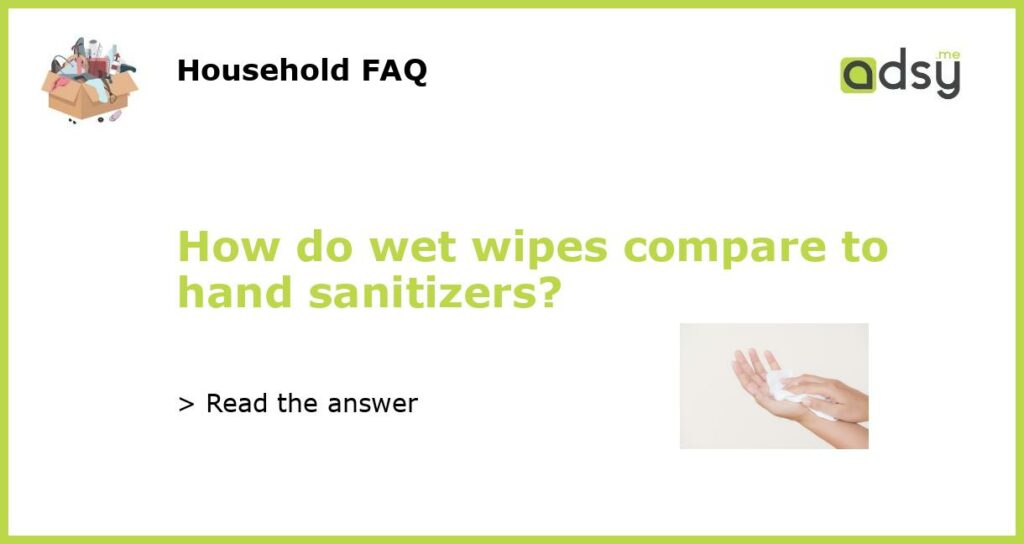Wet Wipes vs. Hand Sanitizers: What’s the Difference?
When it comes to maintaining personal hygiene, wet wipes and hand sanitizers have become popular choices for quick and convenient cleaning. Both products serve the purpose of disinfecting and killing germs, but they differ in their composition, usage, and effectiveness. In this article, we will compare wet wipes to hand sanitizers to help you understand the key differences between the two.
Composition: Wet Wipes
Wet wipes, also known as moist towelettes or baby wipes, are typically made from a combination of water, cleansing agents, and moisturizing ingredients. They often contain mild detergents, such as surfactants, which help remove dirt, grime, and certain germs from the skin’s surface. In addition to cleansing agents, wet wipes may also contain fragrance, preservatives, and soothing ingredients like aloe vera.
Composition: Hand Sanitizers
Hand sanitizers, on the other hand, are primarily composed of alcohol as the active ingredient. When it comes to killing germs effectively, the Centers for Disease Control and Prevention (CDC) recommends hand sanitizers with at least 60% alcohol content. Some hand sanitizers may also contain moisturizing agents, such as glycerin, to help prevent dryness and irritation. However, the focus of hand sanitizers is mainly on killing germs rather than providing cleansing or moisturizing effects.
Usage: Wet Wipes
Wet wipes are typically used for cleaning the skin, primarily hands and face. They offer the convenience of a pre-moistened cloth that can be easily disposed of after use. Wet wipes are especially handy when water and soap are not readily available. They are commonly used for wiping off dirt, sweat, and bacteria from the skin’s surface. Wet wipes are available in different sizes and packaging options, making them easy to carry in purses, pockets, or diaper bags.
Usage: Hand Sanitizers
Hand sanitizers, as the name suggests, are specifically designed to sanitize the hands by killing germs. They come in the form of gels, foams, or sprays and are usually applied directly to the hands. Hand sanitizers are particularly useful in situations where soap and water are not accessible. They are commonly used in healthcare settings, public places, and during travel. Hand sanitizers are often available in portable bottles that can be easily carried in pockets or bags for on-the-go use.
Effectiveness
When it comes to effectiveness, both wet wipes and hand sanitizers can help reduce the number of germs on the skin. However, their effectiveness may vary depending on the specific germs and the concentration of active ingredients. According to the CDC, hand sanitizers with at least 60% alcohol content are effective against a wide range of bacteria and viruses. Wet wipes, on the other hand, may be less effective against certain pathogens that require a stronger disinfectant, such as the norovirus.
While both wet wipes and hand sanitizers can be effective, it is important to note that they are not meant to replace proper handwashing with soap and water. Soap and water remain the gold standard for hand hygiene as they physically remove dirt, grease, and germs from the skin. Wet wipes and hand sanitizers are best used in situations where handwashing is not feasible or available.
In conclusion, wet wipes and hand sanitizers serve different purposes and have different compositions. Wet wipes are primarily used for cleansing the skin and can be a convenient option for on-the-go cleaning. Hand sanitizers, on the other hand, focus on killing germs and are particularly useful when soap and water are not accessible. Both products can be effective in reducing germs, but it is important to remember that they are not a substitute for proper handwashing.






